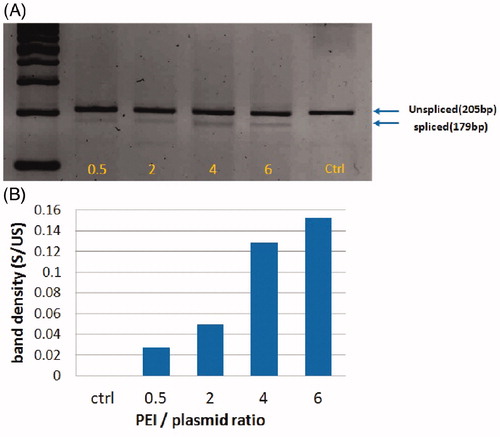Figures & data
Table 1. Primer sequences for real-time RT-PCR and product size of the candidate genes.
Figure 1. Viability of Neuro2A cells measured by MTT assay. Cells were incubated with different concentrations of 25 KDa PEI for 4 h. The results are expressed as means ± SEM. ***: p < .001 as compared to control group (PEI: 0 μg/mL); Treatments were performed in triplicates.
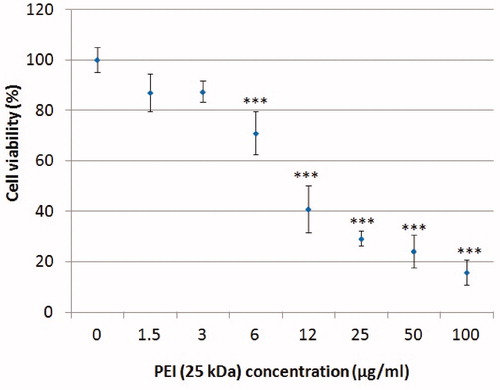
Figure 2. Effects of PEI on transcription level of ER-stress genes in Neuro2A cells. A) Grp78; B) Atf4; and C) Chop mRNA levels were assessed by real-time RT-PCR. The results are normalized against β-act as a housekeeping gene and are shown as means ± SEM. *: p < .05 and ***: p < .001 compared to control group, RFC: relative fold change; Treatments were performed in triplicates.
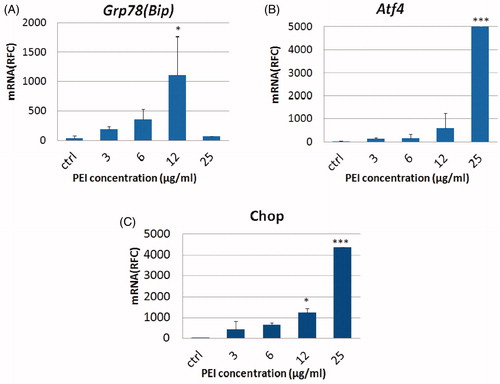
Figure 3. Xbp1 splicing during PEI-induced ER stress. (A) Xbp1 splicing was detected by conventional PCR on a 2.5% agarose gel electrophoresis system. Four hours exposure of Neuro2A cells to increasing concentrations of PEI induced splicing of Xbp1 by separated bands of 205 and 179 bp. (B) band densitometry of spliced/unspliced (S/US) Xbp1 transcripts in Neuro2A cells treated with increasing concentrations of PEI. After plotting the variation of the intensity of every lane, the area under the curve for each band was measured and the results are shown as values of S/US ratio.
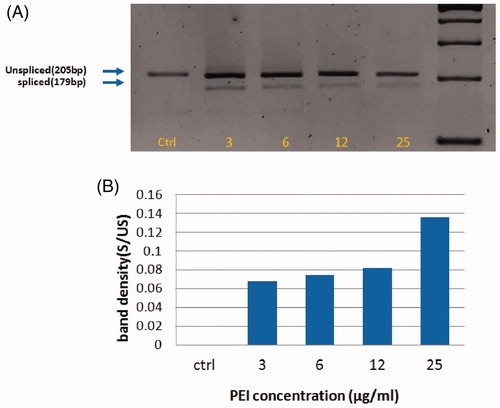
Figure 4. Transfection efficiency comparison of different PEI/plasmid ratios. Visualization of green fluorescent protein (GFP) expression with fluorescence microscopy was used to compare the transfection efficiency of lowest (0.5) and highest (8) PEI/Plasmid ratios into the Neuro2A cells.
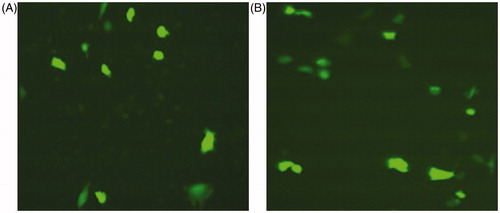
Figure 5. Cell viability of Neuro2A cells incubated with different PEI/plasmid ratios was measured using MTT assay. The results are expressed as means ± SEM. ***: p < .001 as compared to control group, treatments were performed in triplicates.
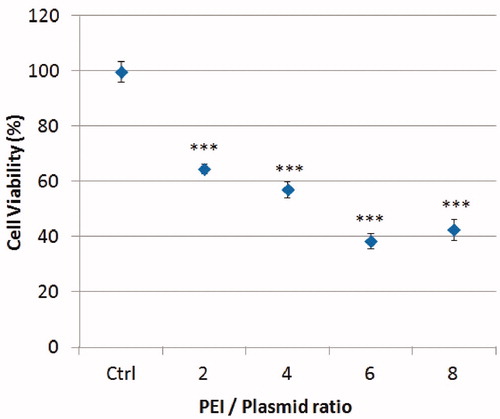
Figure 6. Transcription level of ER-stress genes in Neuro2A cells incubated with different PEI/plasmid ratios. A) Grp78; B) Atf4; and C) Chop mRNA levels were assessed by real-time RT-PCR. The results are normalized against β-act as a housekeeping gene and are shown as means ± SEM. *: p < .05 and ***: p < .001 compared to control group, RFC: relative fold change; Treatments were performed in triplicates.
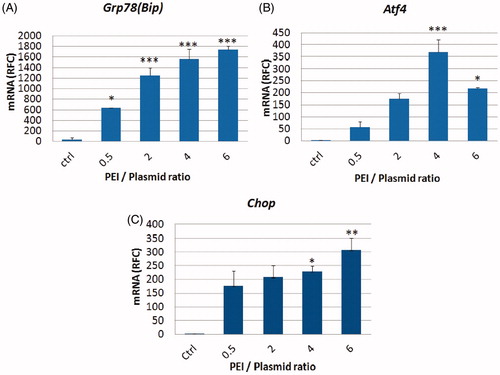
Figure 7. Xbp1 splicing during PEI-induced ER stress. A) Xbp1 splicing was detected by conventional PCR on a 2.5% agarose gel electrophoresis system. Four hours exposure of Neuro2A cells with increasing ratios of PEI/plasmid induced splicing of Xbp1 by two separate bands of 205 and 179 bp. B) band densitometry of spliced/unspliced (S/US) Xbp1 transcripts in Neuro2A cells treated with increasing ratios of PEI/plasmid.
